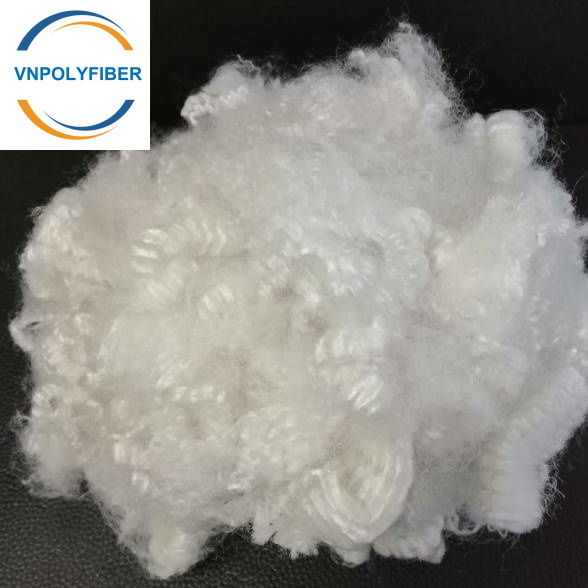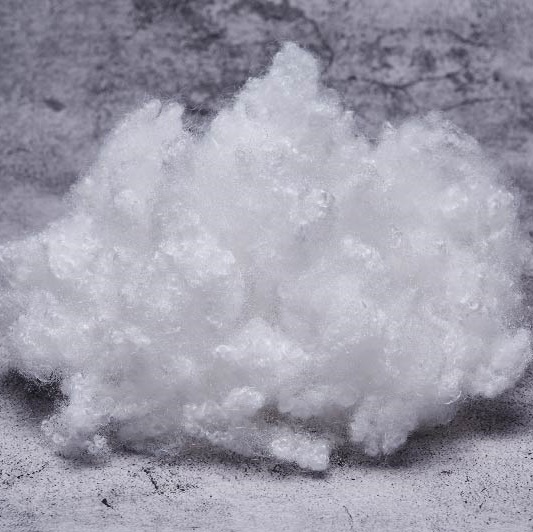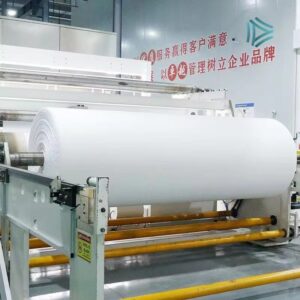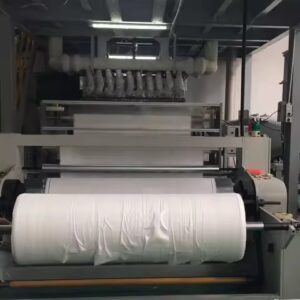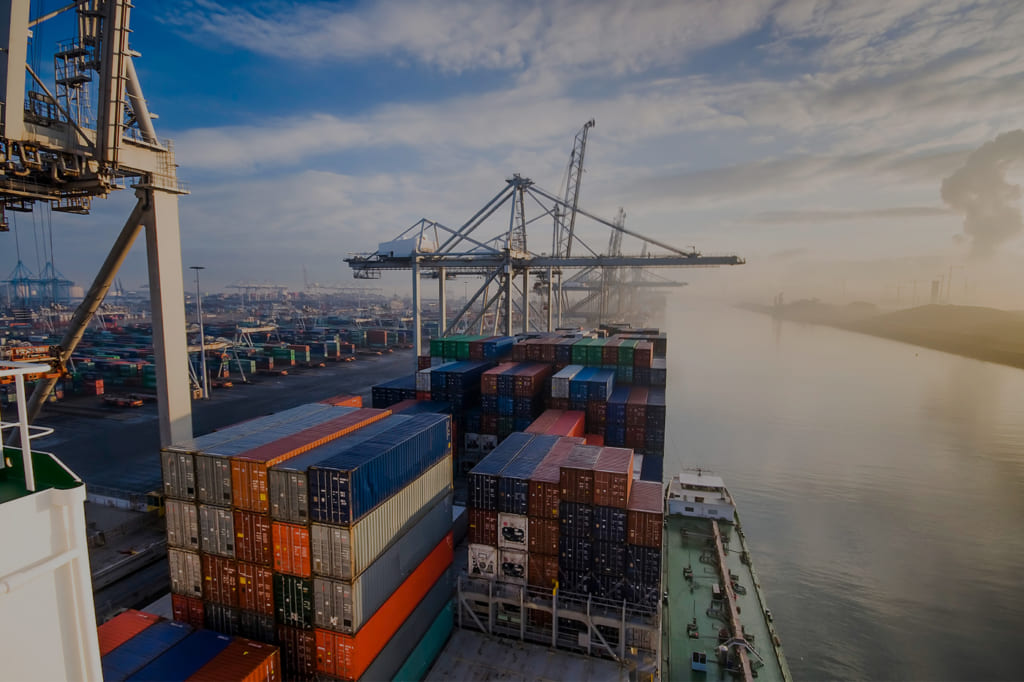What Is Synthetic Staple Fiber?
Synthetic staple fiber technology continues to reshape the textile industry scene with projections showing a 12.7% market growth by 2032. The fiber’s unique hollow structure provides better thermal insulation and superior softness while staying lightweight.
The automotive, apparel, and home textile sectors have embraced synthetic staple fiber yarn rapidly. This innovative material has gained substantial market share because of its versatile applications and performance benefits. North America and Europe now account for 50% of the global demand.
This piece will help you understand the fundamentals of synthetic staple fibers. You will learn about the development of 3D fiber technology and the manufacturing processes that create these remarkable materials.
Understanding Synthetic Staple Fiber Basics
The textile fiber world splits into two main categories that are the foundations of fabric production. Let’s explore deeply into synthetic staple fibers to learn about what makes them special and how they work in modern textiles.
What makes staple fibers different from filament fibers
The main difference between staple and filament fibers lies in their length. Staple fibers are short, discrete pieces that measure between 35 to 150 millimeters. Filament fibers run continuously with no end in sight. This length difference shapes how we process these fibers, their physical traits, and where we use them.
Nature gives us mostly staple fibers—cotton, wool, and jute. Silk stands out as nature’s only filament fiber. Makers of synthetic materials like polyester and nylon first create continuous filaments. They can keep these as is or cut them into staple lengths to match natural fibers.
The way we make these fibers creates key differences between natural and synthetic staple types. Natural staple fibers have uneven widths because of how they grow. Synthetic staple fibers come out uniform since makers control every step. This evenness helps them perform consistently in textile uses.
Staple fibers fall into these length groups:
- Short staple fibers: Less than 60mm long (like cotton at 25-45mm)
- Long staple fibers: Between 60-150mm (like wool)
These lengths affect how we process the fibers and how the final fabrics turn out.
Turning staple fibers into yarns needs spinning to create continuous strands. This extra step gives staple fiber yarns special traits—they’re fluffier, rougher, and look more matte. These qualities make them great for insulation and winter clothes.
On top of that, shorter staple fibers blend better with other types. This creates hybrid materials with mixed properties. Blending helps makers improve function, comfort, or looks of textile products.
The chemical makeup of synthetic staple fibers
Synthetic staple fibers differ from natural ones because they come from chemical synthesis, not biological processes. They start as petroleum-based materials that change through complex chemical steps to create fiber-forming polymers.
Polyester leads synthetic fiber production with about 60% of the total volume. It shows how synthetic fiber chemistry works. Polyester (polyethylene terephthalate or PET) consists of polymers made from two main parts:
- Terephthalic acid (benzene-1,4-dicarboxylic acid)
- Ethylene glycol (ethane-1,2-diol)
These compounds react during polymerization to form long polymer chains through ester links. The polymer melts and flows through tiny holes to form filaments, which can then become staple fibers of specific lengths.
This chemical base sets synthetic fibers apart from regenerated ones like rayon and acetate, which start with natural materials (usually wood cellulose). Pure synthetic fibers like polyester, nylon, and acrylic come entirely from chemicals.
Synthetic staple fibers often include extra chemicals to improve specific traits:
- Antimony: Works as a catalyst in PET production and fights flames
- Antistatic agents: Cut down static buildup
- Wrinkle-resistant treatments: May use formaldehyde, Teflon, or PFAS
- Disperse dyes: Color polyester fabrics
Each type of synthetic staple fiber has its own chemical structure that gives it unique properties. Nylon contains high molecular weight polyamides that make it stretchy, strong, and resistant to wear. Polyester, coming from coal and petroleum, stays light and resists water, wrinkles, and stains.
Makers can change the chemical makeup during production to create special versions. Hollow polyester staple fibers have empty cores that make them lighter and better at insulating. Different synthetic fibers can have varying thickness measurements, strength, and moisture absorption.
The chemical makeup directly affects how well these fibers perform. Solid polyester staple fibers are usually stronger (5-8 g/denier) than hollow conjugated ones (3.5-6 g/denier). These differences make each type right for different uses.
The Evolution of 3D Fiber Technology
The fiber industry’s quest to improve performance has led us from simple flat fibers to sophisticated three-dimensional structures that work better than their predecessors. This progress shows a fundamental move in our approach to fiber design and application across many industries.
Traditional flat fiber limitations
Flat fibers have dominated the synthetic textile market, but their two-dimensional structure creates inherent challenges. These conventional fibers, with their uniform circular cross-sections, don’t deal very well with mechanical limitations when reinforcing composite materials. They often cause noticeable warpage in the final product when used with polyamides.
Traditional flat fibers have a major drawback – they spread unevenly within composite materials. The fibers bunch together instead of spreading uniformly and create weak points throughout the structure. This clustering defeats the purpose of fiber reinforcement, which should provide consistent strength throughout the material.
Surface quality creates another challenge. Products reinforced with conventional fibers show imperfections on their surface that reduce both looks and performance. Manufacturers sometimes try to fix these problems by adding fillers like mica and glass flakes. These additives offer limited reinforcement benefits because they lack a fibrous structure.
These constraints made the industry learn about alternative fiber geometries. Flat fibers’ limitations became clear in applications that needed precision, durability, and good looks—leading researchers to completely rethink fiber design.
Development of three-dimensional fiber structures
Three-dimensional fiber structures represent one of the most important breakthroughs in textile technology. The story of 3D fiber technology started in an unexpected way—Northrop Grumman’s engineers who played music wanted to 3D print a guitar for their company band “Lab 125”. They found that plastic alone couldn’t support the tension from guitar strings, so they started learning ways to add fiber reinforcement to their 3D printing process.
Their creative problem-solving earned them a groundbreaking patent (10,173,410) in January 2019. The patent covered technology that pushes fiber and resin together from a single 3D printer nozzle. This breakthrough solved a basic challenge in composite manufacturing: traditional composite fabrication costs a lot because it takes time and needs intensive labor.
This development means more than just convenience. Carbon fiber reinforced 3D printing creates a way to “automatically get the fibers and the resin together and try to build a near-net shape structure as opposed to trying to lay it up and build it with plies”. The special nozzle works on conventional machines with small changes, letting resin and carbon fibers come out of a single head at the same time.
The textile industry developed three-dimensional woven structures through different methods. New weaving technologies with modified heddle position systems created various 3D woven structure textile groups, including:
- Layer-to-layer orthogonal weaving
- Through-thickness orthogonal weaving
- Layer-to-layer angle-interlock weaving
- Through-thickness angle-interlock weaving
These structures show real improvements in performance. Angle-interlock woven structures have about 50% greater flexural strength and 40% higher modulus than orthogonal-woven structures. The through-thickness angle-interlock woven structure shows the best flexural-failure resistance among all tested textile structures.
The market needs specific things that drove 3D fiber technology’s rise. Traditional 2D woven fabrics often lack delamination resistance and have poor out-of-plane mechanical characteristics because they don’t have enough through-thickness reinforcement. 3D fully interlaced preform weaving offers a way to produce fully interlaced 3D woven fabric structures with through-thickness reinforcement. This improves both delamination resistance and out-of-plane mechanical characteristics.
Advanced structures need exact performance requirements. Fibers must be strong and rigid enough to handle the high crimp in 3D woven fabrics that comes from yarns interlacing in different dimensions. Performance characteristics matter more than comfort properties in today’s technical textiles sector.
3D printing with natural fiber-reinforced composites opens new possibilities for eco-friendly manufacturing. This technology helps produce sustainable devices cost-effectively, with complete design freedom and complex architectures at both macro and micro scales.
Manufacturing Process of 3D Synthetic Staple Fibers
The production of synthetic staple fibers combines precise engineering and chemical processes to turn raw polymers into versatile textile materials. Each 3D synthetic staple fiber comes from a carefully coordinated manufacturing process that shapes its performance, appearance, and functionality.
Raw material preparation and extrusion
The manufacturing of synthetic staple fiber starts with careful selection and preparation of raw materials. Manufacturers turn solid polymers into a fluid state that works for extrusion. They do this by melting thermoplastic synthetic polymers or dissolving non-thermoplastic cellulosic polymers in the right solvents. Polyester staple fiber production uses terephthalic acid and ethylene glycol as primary raw materials. These materials go through chemical polymerization to create polyester resin.
The polymerization happens in two stages before polycondensation, and esterification is the most common way to do it. This stage needs exact control of chemical reactions to develop polymers with consistent properties. After polymerization, the polymer melts—polyester needs heating to about 260°C (±5°C) to get the right viscosity without damaging the material.
You can convert prepared polymer solutions into fibers using three main spinning methods:
- Melt spinning: This method works best for thermoplastic polymers like polyester, nylon, and olefin. It melts the polymer and pushes it through a spinneret, then makes it solid by cooling. This is the quickest way to make synthetic staple fibers because it lets you control fiber dimensions and properties exactly.
- Dry spinning: This process works with polymers dissolved in volatile solvents. It pushes the solution into heated drying chambers where the solvent evaporates and leaves solid fibers. The polymer solution usually contains 20% to 30% polymer—higher amounts make the solution thicker and harder to handle.
- Wet spinning: This method works for polymers that only dissolve in non-volatile solvents. It pushes the polymer solution into a chemical bath with low molecular weight chemicals that form the fiber. Manufacturers often use this technique to make acrylic, rayon, and spandex.
These processes share three simple operations: they turn polymeric material into liquid, push this liquid under pressure through spinneret holes, and quickly make the extruded material solid.
The extrusion stage plays a key role in fiber formation. High-precision spinnerets—devices that work like shower heads—have many tiny holes that force the thick polymer through. These spinnerets can easily get damaged by impurities and corrosion, so they need careful filtration of the feeding liquid and regular upkeep to prevent clogging.
The filaments cool down and become solid right after leaving the spinneret. In melt spinning, this happens when controlled airflow hits them in quenching chambers. The new filaments then get a spin finish—a surface treatment that makes the yarn slippery, cuts down static electricity, helps yarn stick together, and makes the fiber more flexible.
Conclusion
Synthetic staple fiber technology is pioneering textile breakthroughs by reshaping traditional manufacturing with advanced 3D structures and hollow core designs. The industry shows promising signs of expansion with market projections that indicate 12.7% growth through 2032. This growth spans across automotive, apparel, and home textile applications.
Manufacturing excellence propels this development. Manufacturers can now precisely control polymer preparation, extrusion, crimping, and cutting processes to create fibers that perform better than traditional materials. They have moved beyond conventional limitations to create specialized variants. These include hollow conjugated and siliconized fibers that boost insulation, durability, and comfort.
Technical progress keeps reshaping fiber’s capabilities. The three-dimensional structures provide better mechanical properties and hollow cores offer exceptional thermal regulation. These state-of-the-art developments help synthetic staple fibers match or outperform natural fibers in many applications.
Quality control is a vital part of production. It ensures consistent fiber characteristics from raw material selection to final baling. Modern testing methods help manufacturers optimize crimp parameters and mechanical properties. This leads to products that meet exact specifications in a variety of applications.
Synthetic staple fiber technology shows how engineered materials can tackle complex manufacturing challenges while meeting strict performance requirements. The field’s quick advancement hints at more sophisticated applications emerging soon, which will expand possibilities for next-generation textile products.


